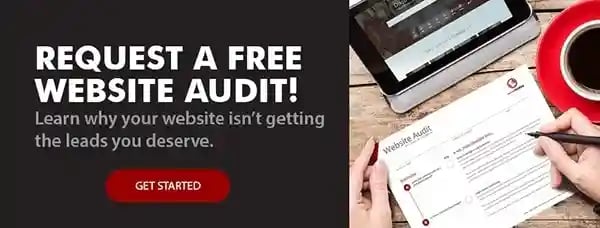I promise not to get into the anatomy of the body and how organs, muscles, and bones all work together, although I could ;).
I do however want to discuss the structure of a successful website. Believe it or not, there is a method to the madness of building a successful website, one that serves as more than a pretty picture or brochure.
If you want a website with the total package, #beautyandbrains, keep reading.
THE HEAD(ER):
Let's start from the top and work our way down shall we. Like the head, the header holds the brain and tells site visitors how the rest of the website should function. It contains key elements and serves as a reference and home base for a website.
The header of a successful website should contain your company logo, phone number, social media icons/links, your website navigation, and at least one call-to-action (CTA). Let's dive quickly into the why.
Why the logo? Seeing a name/company logo when landing on a page allows users to quickly determine whether or not they are in the right place. Did they land where they intended to go?
Should someone get to a spot on your site and get lost, the logo serves as home base and should take them back to your home page.
Why the phone number? Listing your phone number builds credibility. As a customer, wouldn't you want to be able to reach out to a live person if you had a question about their offerings? Of course you would. Don't you feel iffy if there isn't a number or means for you to do so? Of course you do.
Why the social media icons? Being "out" in the public, provides accessibility and continues to build credibility. Most humans are social by nature. I mean take a moment to think about all of the social platforms out there now. Being social is expected.
Why not provide the means for prospects and customers to connect with your business if they want to?!
Why website navigation? Seriously! I don't know a person on Earth who enjoys being lost. How do you know where to go if you've never been somewhere, without having directions to get there?
In today's world of 3 seconds or less to capture a visitors attention and I wanted that 3-5 minutes ago, no one wants to waste time on a site that is poorly laid out. Basic site navigation should include home, about, services/products, and contact at a MINIMUM.
Proper site navigation allows visitors to get to what they are looking for quickly. It's also important to limit the number of clicks it takes to get to what they are looking for. Why? Because, we are toddlers and "we want it now"!
Why the CTA? CTAs do just that, they ask people to do something. You may only have a visitor's attention for 60 seconds (or less).
If you include a CTA in the header, you may be able to capture their information by requesting they follow you on a social platform or join your newsletter to get industry insights and tips. Like anything else, the more touch points you create, the greater your chance of gaining a customer.
THE BODY:
Now that we've covered the HEAD, let's move down to the body. Just like the human body, the body of a website is divided into two parts, upper and lower.
THE UPPER BODY in terms of website anatomy typically includes the header, hero image, and some content. The UPPER BODY includes everything that is above the fold.
For those of you that don't know, above the fold is a term that was developed to describe the information on a newspaper that came above the crease (the fold). This information was deemed to be the most important/valuable as it was seen without having to unfold the newspaper.
This principle reigns true for website development. A successful website is designed with the fold in mind. The most pertinent information should be above the fold. For more information on this topic, read Designing Above the Fold.
THE LOWER BODY includes what is below the fold which is normally the bulk of content. This area of the website is used to tell a story. The goal here is to go into detail. You should use this content area to cover common questions asked and concerns voiced when someone is considering hiring your company.
Successful websites use the LOWER BODY to talk about their company, service offerings and their process. They answer common questions, discuss who they've helped, what their customers say about them, and discuss next steps (normally in the form of a CTA).
THE FOOT(ER):
Now that we've expanded on the company in the BODY, let's move down to the final part of the website anatomy, the FOOTER. The goal here is to recap and provide access.
Like our own feet, the FOOTER of a successful website should take the visitor wherever it is they want to go. Typically, this area of the site contains your company logo, main site navigation links, contact information including social media icons, and of course a CTA.
THE REMEDY:
Behind every successful website design is a strategy for conversion. Want to know more about web design strategies and what goes into creating a website that works? Read this article, Web Design Made Simple.
Are you looking to build a website that is more than pretty? Do you need a site that converts visitors into leads and then into customers? Need help with your website conversion strategy?
Click the button below to request an audit of your website and discuss how we can help turn your website into a lean, mean, conversion machine. :)



